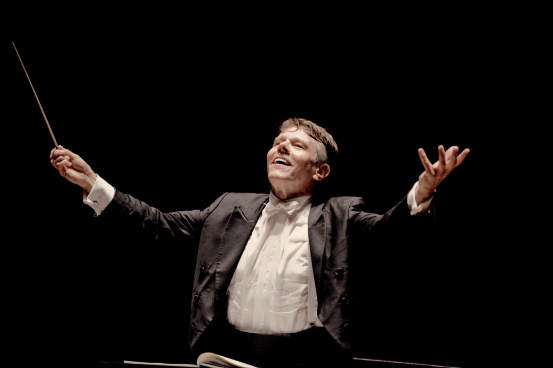Jansons, Bavarian Symphony close Carnegie stand with rapturous Brahms

Mariss Jansons led the Bavarian Radio Symphony Orchestra in music of Ligeti, Berg, and Brahms Sunday at Carnegie Hall.
Not even the promise of Brahms’s enduringly popular Symphony No. 2 was enough to draw a crowd to Carnegie Hall on Sunday afternoon. The last several rows of the orchestra section sat empty as Mariss Jansons and the Bavarian Radio Symphony Orchestra closed out their three-concert Carnegie Hall stand. Two important twentieth-century pieces made up the first half, and seemed to scare off wary concertgoers.
It is a testament to their power and to the conviction with which they were played that there was not the usual mass exodus at the ten-minute mark of either piece. The first of the two, György Ligeti’s Atmosphères, is an aggressive departure from traditional symphonic style, rejecting tonality and melody in favor of creating musical states of being.
Most famous for its role in Kubrick’s 2001: A Space Odyssey, Atmosphères is equally effective as a concert piece, as the BRSO demonstrated on Sunday. True to its name, the piece depicts environments more than it does scenes or events. There is a constant feeling of vast emptiness, but Jansons found variety, painting with multiple colors at one stroke, juxtaposing shimmering cold in the winds and violins with a dark, oaky growl from the low strings.
Gil Shaham took on Alban Berg’s Violin Concerto and gave it a deeply personal performance. Berg’s writing is of course noteworthy for its innovative use of free dissonance, but there is also much in his musical language that hearkens back to his Romantic forebears.
A typical performance of this concerto will often be austere, played with an ethereal cold as though through a sheet of glass. Such an interpretation can have powerful allure, but Shaham took a different approach, diving into the lines of his solo part with a warm tone and full vibrato that one might expect in a nineteenth-century concerto.
The orchestra matched him with hearty, earthy playing, following his sculpted phrases and finding sincere, powerful expression in the music. Together they brought to life the playful—if melancholy—waltzes of the first movement’s Allegretto section.
After launching into the Allegro with virtuosic fire, Shaham cooled off somewhat, growing tame while the orchestra continued to beat at their tight chords with force. He was blissfully tender, though, when accompanying the BRSO winds in their lovingly played chorale. Here, his playing was simplicity itself, allowing Berg’s writing to do the work.
Shaham’s encore was the Gavotte en Rondeau from Bach’s E major Partita, given a bouncing, smiling interpretation that communicated all of the piece’s joy and added some cheekily virtuosic ornamentation to the refrain.
Brahms’s Second Symphony, which made up the second half, was an experience of rapture. Jansons rocked his strings gently into the first movement before unleashing glorious stomping and dark molasses tone. There were moments of sluggishness—“non troppo” is part of the movement’s tempo marking, but then so is “Allegro”—and the true meno mosso sections were less effective as a result. On the whole, though, the grandeur of the music was fully evident.
In the Adagio the BRSO brought a huge, enveloping sound, impressing with sheer decibels but also with gorgeous, singing tone, particularly from the celli. Turbulent stretches seemed at times to be threatening to get away, but were brought back to earth by the stately calm of the primary theme. Opening with a graceful lilt, the Scherzo was stronger in its minuet-like sections than in the presto, which was overly skittering. The spiccato in the strings was dry, sapping energy from the music.
The finale, despite an unfortunate splat of brass on the first chord, was a thing of wonder. It seemed constantly to be building to moments of outsize passion. Even in this flying, bright movement the orchestra kept a dark hue in its sound which, rather than dragging the music down, added to its momentum. An impressive and thrilling accelerando in the coda became a heroic gallop to the finish.
More Ligeti made for a fiery encore: a zesty, sensational rendition of the riotous finale from the Concert Romanesc.